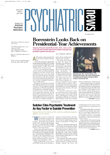A group of researchers has proposed a new hypothesis detailing the biochemical processes underlying the development of Alzheimer’s disease.
The new premise still blames the commonly accepted culprit—beta amyloid—but it diverges sharply from conventional theory in the specific form of amyloid responsible and the processes involved in the development of the devastating disease. For the first time, the new theory is able to explain not only late stages of the disease, but also early forms, including mild cognitive impairment.
The theory was described in detail in the April Trends in Neuroscience in a report by William L. Klein, M.D., a professor of neurobiology, physiology, and neurology at Northwestern University; Grant A Krafft, Ph.D., research professor of molecular pharmacology and biochemistry at Northwestern; and Caleb E. Finch, Ph.D., university professor and ARCO–William F. Kieschnick chair in the neurobiology of aging and director of the Alzheimer’s Disease Research Center at the University of Southern California.
In prior work, the researchers were able to isolate a previously unidentified soluble form of amyloid that they had named “ADDLs”—amyloid beta derived diffusible ligands. ADDLs are much smaller than the amyloid fibrils known to aggregate into senile plaques in the brains of individuals with Alzheimer’s, and while those larger fibrils are insoluble, ADDLs can diffuse through cell membranes, allowing them to travel throughout the brain tissue.
“We were able to show that the soluble form of amyloid had the ability to cause toxicity even when it diffused through a porous membrane,” lead researcher Finch told Psychiatric News. “Then, not only did it cause toxicity that led in the long term to cellular damage and eventually neuronal death, but also in the short term it caused the electrical system of the neurons to sort of short-circuit, which interfered with long-term potentiation, which is a model for memory.”
In addition, Finch explained, ADDLs showed an important regionally selective neurotoxicity that spared neurons in the cerebellum while selectively causing damage to and killing neurons in the hippocampus and the entorhinal cortex, areas known to be severely damaged in people with Alzheimer’s.
“This specificity follows the regional pattern seen in neurodegeneration with Alzheimer’s,” Finch said. “With conventional beta amyloid aggregates that contain mostly fibrils, there is no sparing of cerebellar neurons, either in slice or cell culture.”
Overall, the authors said, the collective results indicate that novel mechanisms that are independent of actual neuronal death could be contributing to mild cognitive impairments in the early stages of Alzheimer’s. In their Trends in Neurosciences article, they propose a “dual toxin hypothesis” for Alzheimer’s that is composed of three stages of neuronal dysfunction and degeneration.
In what they term a “beta amyloid cascade,” a potentially reversible memory impairment occurs as the first step via mechanisms like those seen in experimental cultures where long-term potentiation is impaired.
Second, as ADDLs accumulate and the duration of exposure to their toxic effects lengthens, synaptic terminals are damaged or destroyed. Third, synaptic regression and other ADDL-induced effects lead to neuron death.
The larger amyloid fibrils, which require much higher concentrations of beta amyloid to form, eventually do accumulate to toxic levels, participating along with ADDLs in the overall pathogenic beta amyloid cascade.
The long-term implications of the theory, should it be independently verified, are quite significant, according to Finch. “The goal would be to develop immunological molecules—antibodies—against ADDLs and see if they could be clinically important. Second, we would also want to attempt to develop drugs that would be effective against soluble forms of amyloid.”
The new theory, the report cautioned, has potentially drastic implications for a group of drugs being currently developed to treat AD. Several pharmaceutical companies, according to Finch, are working on medications that would effectively break up the larger amyloid fibrils, preventing them from aggregating into senile plaques. The danger, according to the report, is that this tactic may actually increase the available concentrations of soluble forms of amyloid, thereby leading to a worsening of the disease, not a delay in decline or reversal of symptoms.
“Targeting Small Beta Amyloid Oligomers: The Solution to an Alzheimer’s Disease Conundrum?” is posted on the Web at www.sciencedirect.com. ▪
